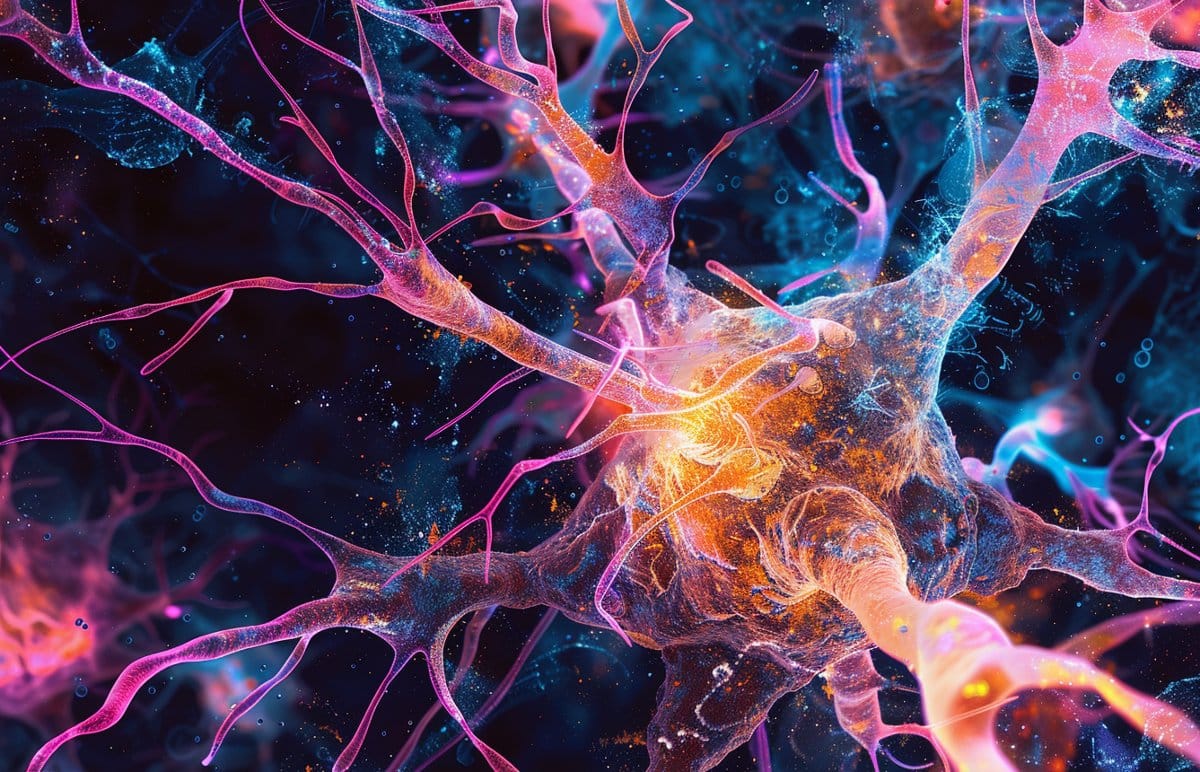Summary: Researchers have pioneered a method to enhance the generation of dopaminergic neurons, crucial for the treatment of Parkinson’s disease, by targeting specific receptors within the Wnt signaling pathway. Using synthetic antibodies, the team successfully directed stem cell differentiation in the midbrain to produce these key neurons, which are critical to brain health and are depleted in Parkinson’s patients.
This new approach could lead to more effective treatments for the disease, bypassing previous methods that caused unwanted effects. Early promising results in rodent models show potential to restore motor function, setting the stage for further preclinical testing.
Key factors:
- Innovative guidance method: Researchers developed synthetic antibodies to selectively activate the FZD5 receptor in the Wnt signaling pathway, improving the accuracy of stem cell differentiation into dopaminergic neurons.
- Promising preclinical results: Neurons generated using this new method closely resemble natural dopaminergic neurons and have shown potential to alleviate Parkinson’s symptoms in rodent models.
- Clinical application potential: This study opens new avenues for developing Parkinson’s treatments that are more efficient and have fewer side effects, moving closer to clinical trials.
Source: University of Toronto
University of Toronto researchers have found a way to better control the preclinical generation of depleted key neurons in Parkinson’s disease, pointing toward a new approach to a disease with no cure and few effective treatments.
The researchers used an antibody to selectively activate a receptor in a molecular signaling pathway to develop dopaminergic neurons. These neurons produce dopamine, a neurotransmitter critical to brain health.

Researchers around the world have been working to get stem cells to differentiate into dopaminergic neurons, to replace those lost in patients living with Parkinson’s disease. But efforts have been hampered in part by the inability to target specific receptors and areas of the brain.
We used synthetic antibodies we had previously developed to target the Wnt signaling pathway, said Stephane Angers, the study’s principal investigator and director of the Donnelly Center for Cellular and Molecular Biology.
We can selectively activate this pathway to direct midbrain stem cells to become neurons by targeting specific receptors in the pathway, said Angers, who is also a professor in the Leslie Dan College of Pharmacy and the College of Temerty Medicine, and holds the Charles H. Best Chair in Medical Research at U of T. This method of activation has not been explored before.
The study was recently published in the journaldevelopment.
Parkinson’s disease is the second most common neurological disorder after Alzheimer’s and affects more than 100,000 Canadians. It particularly affects older men, progressively impairing movement and causing pain, as well as sleep and mental health problems.
Most previous research efforts to activate the Wnt signaling pathway have relied on an inhibitor of the GSK3 enzyme. This method involves multiple signaling pathways for stem cell proliferation and differentiation, which can lead to unwanted effects on newly produced neurons and off-target cell activation.
We have developed an efficient method to stimulate the differentiation of stem cells to produce neural cells in the midbrain, said AndyYang, the study’s first author and a doctoral student at the Donnelly Center.
Furthermore, cells activated via the FZD5 receptor closely resemble naturally occurring dopaminergic neurons.
Another promising finding in the study was that implantation of artificially produced neurons in a rodent model of Parkinson’s disease led to an improvement in the rodents’ locomotor impairment.
Our next step would be to continue using rodents or other appropriate models to compare the results of FZD5 receptor activation and GSK3 inhibition, Yang said. These experiments will confirm which method is most effective in improving the symptoms of Parkinson’s disease before clinical trials.
Funding: This research was supported by the Medicine by Design program at the University of Toronto, which receives funding from the Canada First Research Excellence Fund and the Canadian Institutes of Health Research.
About this neurogenesis and Parkinson’s disease research news
Author: Anika Hazra
Source: University of Toronto
Contact: Anika Hazra – University of Toronto
Image: Image credited to Neuroscience News
Original search: Open access
“Exploiting spatiotemporal regulation of FZD5 during neuronal patterning for efficient ventral midbrain specification” by Stephane Angers et al. development
Summary
Exploiting spatiotemporal regulation of FZD5 during neuronal patterning for efficient specification of the ventral midbrain
Wnt/-catenin signaling governs anterior-posterior neuronal patterning during development. Current human pluripotent stem cell (hPSC) differentiation protocols use a GSK3 inhibitor to activate Wnt signaling to promote subsequent neuronal fate specification.
However, GSK3 is a pleiotropic kinase involved in multiple signaling pathways, and because GSK3 inhibition occurs downstream in the signaling cascade, it avoids potential opportunities to achieve specificity or regulation at the receptor level.
Furthermore, the specific roles of individual FZD receptors in anterior-posterior patterning are poorly understood.
Here, we have characterized the cell surface expression of FZD receptors in neural progenitor cells with distinct regional identity.
Our data reveal a unique regulation of FZD5 expression in earlier neural progenitors, and this expression is downregulated as cells adopt a later fate.
This spatial regulation of FZD expression constitutes a previously unreported regulatory mechanism that adjusts the levels of -catenin signaling along the anterior-posterior axis and possibly contributes to the formation of the posterior midbrain boundary.
Stimulation of Wnt/-catenin signaling in hPSCs, using a tetravalent antibody that selectively activates FZD5 and LRP6 clustering, leads to midbrain progenitor differentiation and results in functional dopaminergic neurons.in vitroialive
#Enhancing #neurogenesis #treatment #Parkinsons #Neuroscience #News
Image Source : neurosciencenews.com